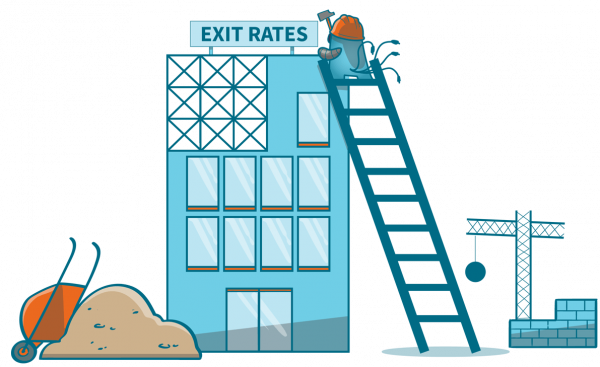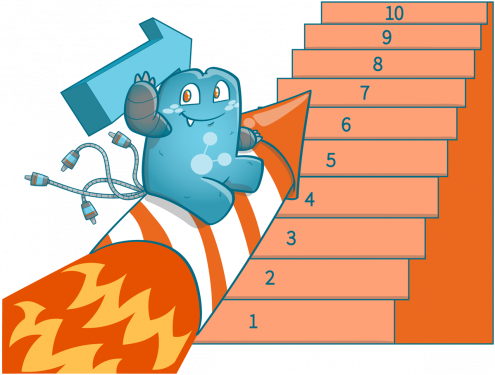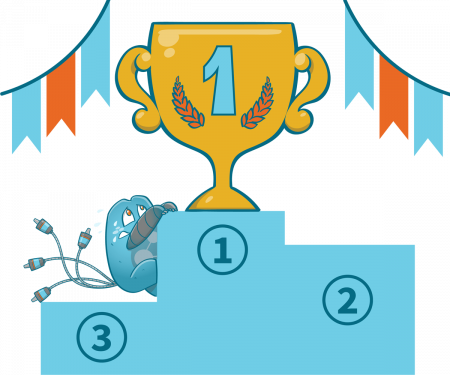How Internal Linking Affects Bounce Rate and Exit Rate – 5 Tips to Quickly Reduce Bounce Rate
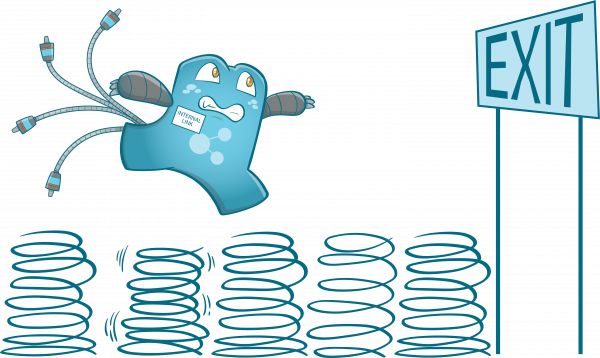
With all the things that you’d have to consider to increase your rankings, here comes another set of metrics—bounce and exit rates. Many people are still confused about the differences between bounce rate and exit rate, how it works, and what are its effects on your site’s performance.
In this article we’re going to delve deeper into these two metrics and what are their key differences. We’ve also answered FAQs about bounce rates and exit rates for you.
What is a Bounce Rate?
A bounce is when a user enters a website and exits rather than viewing other pages on the site. In Google Analytics, a bounce signals the Analytics server that the user’s activity on a particular page is just a “single-request” session. When a bounce occurs, it means the visitor didn’t trigger any other request to the Analytics server.
Bounce Rate is the variable computed when all single-page sessions on your site are divided by all sessions. It could also be explained as the percentage of all sessions on your website, wherein the visitor only viewed a single page and at the same time triggered a single request to the Analytics server.
During a bounce, the session duration is 0 seconds since there are no other hits that Google Analytics can use as a basis to know the actual length of the session.
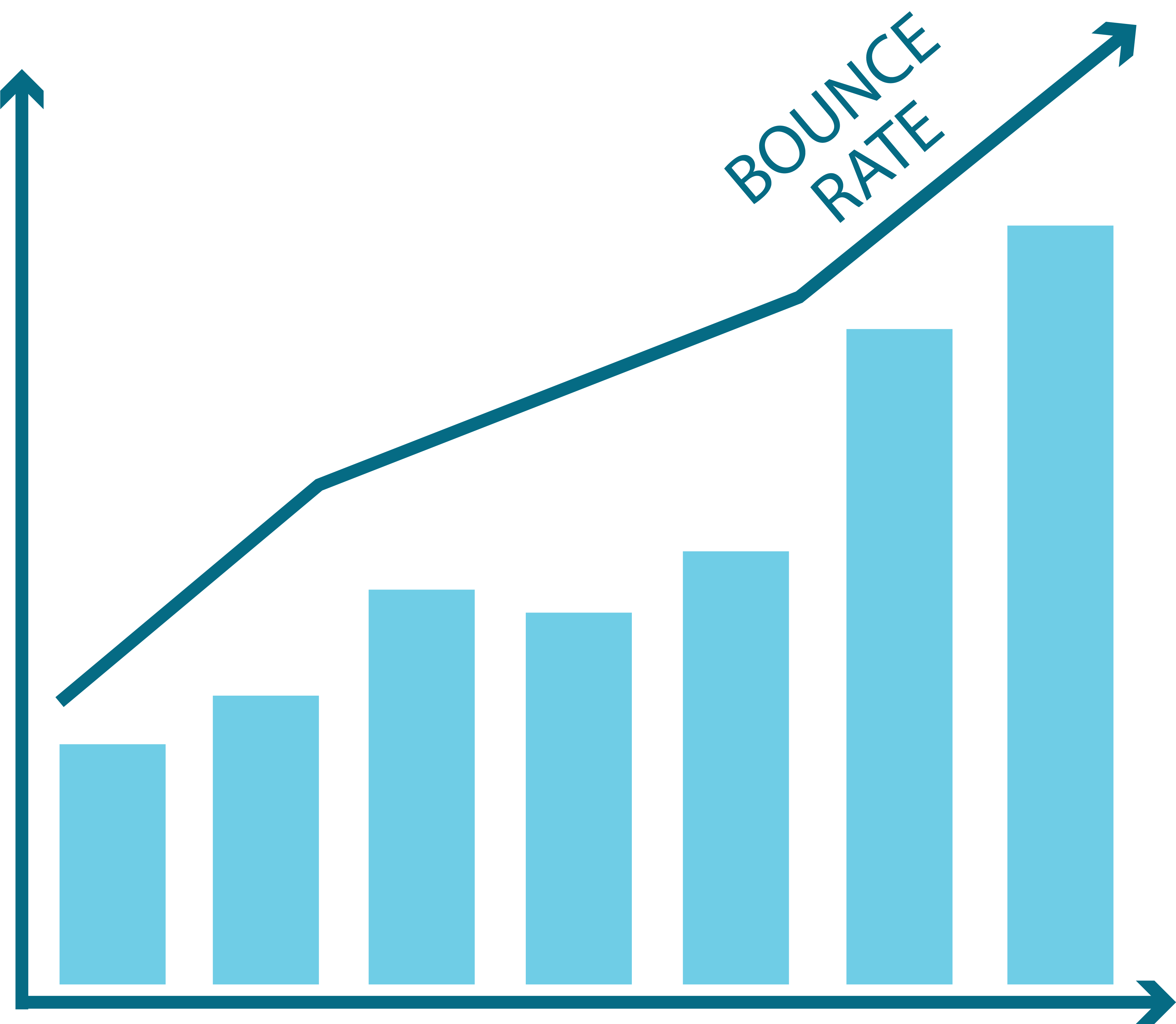
Should We Worry About a High Bounce Rate?
A high bounce rate isn’t necessarily alarming since other factors are considered to determine if it is damaging your overall ranking.
So, does bounce rate affect SEO? Here’s an example to answer that question.
Suppose you have a site that highly depends on users visiting more than one page. If this is the case, a high bounce rate is terrible. Another example is if you need your visitors to click a link on your landing page to view other products or articles, but your visitors only view the landing page and move on. This means that a high bounce rate isn’t what you really need.
On the other hand, if your site is designed as a single-page website where all the products or services and everything the visitor needs to know is already on the page, then yes, having a high bounce rate is perfectly normal. In the case of single-page websites, users won’t have anywhere to go other than the page itself. This means that the bounce rate will be high since the user entered and exited the same page.
Lowering Your Bounce Rate
If you’re concerned about your bounce rate and SEO, don’t worry, it’s not the end for you. The first thing you should do is to use different perspectives in examining your bounce rate. Check out the different reports below and what website elements they measure.
- Channels Report – bounce rate for every channel grouping.
- All Traffic Report – bounce rate for each source/medium pair.
- All Pages Report – bounce rate for each individual page.
- Audience Overview Report – bounce rate for your website.
By examining these reports, you’ll already have an idea of what you should try to improve—the whole website, one or two channels, or just a couple of pages.
For example, if only a couple of pages are causing the problems, you can check whether the contents of the web pages are fit for your marketing strategy implemented to drive users to them. You can also check if the problematic pages offer easy paths in going to where you want to take them
You should also check if the ads on your pages are relevant to your site content. This is important since if a car enthusiast would visit one of your car-related pages, and your ads are all about plants, most probably, the guest wouldn’t click your ads or links. However, if you change your ads and make them revolve around new cars, car upgrades, or anything related to cars, chances are, the visitor would want to know about what’s on the other side of the link/ad.
If the problem is bigger and more widespread, it is time for you to do a complete site audit. Check if tags are correct and reevaluate your site design, including the language, graphics, color, CTAs, and visibility of page elements.
Another thing that you can do is to integrate high-quality internal links into your pages. With internal links, you can encourage visitors to spend more time on your website by incorporating internal links that will make them click around and go deeper into the site. From here, you can create clear paths for users to follow and ultimately, convert them.
What is an Exit Rate?
Due to the similarities in the descriptions, bounce rate and exit rate are often used interchangeably. An exit is a metric that refers to the number of times a visitor left a website from a single page.
The exit rate shows how often users exit a website’s page after visiting one or two pages on the same site. The computation for exit rates is similar to bounce rates. You have to divide the number of exits by the total number of page views for a particular page.
A good example for exits is when a user enters the homepage of a fitness website, browses the category pages, then to a product page, and leaves. The product page is where the exit occurred.
Tracking Exits
You need to monitor exits since they help you understand the performance of your website and, more importantly, individual pages. Knowing which page visitors exit the most is advantageous for you since you’d know which ones cause loss of engagement. Once you get the rating of each page, you can start improving them to ensure that visitors won’t lose interest in your site not until conversion.
Note that not all pages with high exit rates should be improved since, obviously, people will have to leave your website one way or another. For example, if the exit rate for your “after purchase page” is high, then you shouldn’t worry about it since your visitor has completed the action you were aiming for.
However, if a high exit rate is found on a “checkout items page,” you might want to investigate what’s stopping your visitors from checking out the products.
Investigating and Reducing High Exit Rates
Understand Your User’s Behavior
The good thing about analytics is that it helps you understand and figure out where a visitor usually enters and exits. From there, you’ll be able to create a strategy that will make visitors accomplish your desired actions before they leave the site.
Most of the time, users lose interest in a webpage because of different issues. Listed below are common problems that you should look out for:
- Encountering bugs or issues on a page
- Content is incorrectly posted on the web page
- Too many intrusive pop-ups or other content elements
- Unorganized page
Encourage Users to Stay on Your Site
It is natural for users to exit your website on “thank-you pages,” but if you notice that they often leave while in the middle of a webpage, chances are they lose interest in the content. So, to encourage them to stay, you can interlink blog posts relevant to what they are reading.
Another strategy to encourage users to stay is to ask them why they didn’t sign up or buy your product. Do this by placing a slide-in scroll box that pops up if the mouse hovers over it before clicking the close button.
Optimize Your Conversion Funnel
Through the information about exits, you will know where users usually stay and drop off. There are several reasons why users will exit a page. It is best to study the part of the funnel where the exit rate is the highest. Then make changes that you think will help you retain more page visitors.
Give Users an Idea on What to Expect
Through internal links, users don’t have to guess what’s on the other end of a link. Well-thought anchor texts for internal links promote what marketers call ‘confidence clicking’. This means that users won’t have to think twice before clicking a link since they already have an idea of what they are about to open.
Increase Clickability
Internal links also allow you to craft very specific anchor texts that contain CTAs. Or other keywords that create a higher degree of relevancy and probably convert visitors.
Key Differences Between Bounce and Exit Rate
As stated earlier, bounces are recorded when only one signal is sent to Analytics. In contrast, exits are recorded when a guest exits a web page after visiting other pages on the website. Unlike exits, bounces identify the number of visitors who leave without doing actions. Say like clicking a hyperlink or navigating to the second page after arriving at a landing page.
To give you a clearer idea of how they work, here’s an example:
When a guest lands on a blog, reads it, and immediately leaves, it would count as a bounce. However, if after reading the first blog, the guest clicks a “recent post” or a “related post,” reads it, then leaves, it would now be counted as an exit.
Technically, the bounce from the blog post is an exit since the visitor left the website on the page, but it is still known as a bounce because he didn’t go anywhere else.
So, you can say that: all bounces are exits, but not all exits are bounces.
Get Higher Engagement with Internal Linking!
There are a lot of metrics that you can use to improve your website or your online business. And bounce and exit rates are two of those. When the information about the two rates is combined with proper internal linking strategies, you can significantly improve your site’s SEO health.
So, how do internal linking strategies affect bounce and exit rates? Simple. Whenever a visitor lands on one of your pages, content, together with other elements in your page (related posts, recent posts, CTA buttons, hyperlinks to different pages), will be the ones to engage the guest to interact with the website more.
If the internal links on your web page are irrelevant or cannot be seen, there won’t be anything that the user can do but leave. So, if you’ve seen your bounce rate and exit rate metrics and you want to improve them. Be sure to look at your internal linking strategies too.
Establishing an internal linking system is a challenging, and sometimes difficult task. With Internal Link Juicer’s plug-in, you won’t have to spend too much time diversifying anchor texts, connecting relevant pages, and increasing traffic and interaction. Get the premium plugin today!



